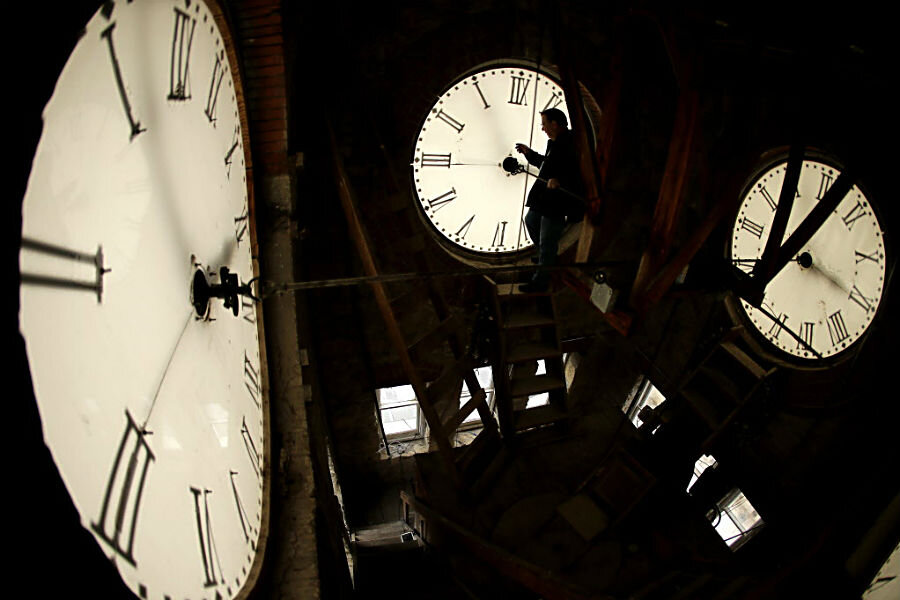Does daylight savings actually save energy?
Loading...
In 1784, Benjamin Franklin jokingly suggested that Parisians could save money on candles if they started their days when the sun came up.
As timekeeping became more precise, the concept of Daylight Savings Time moved from satire to reality. Conceived of independently in many nations around the turn of the 20th century, the most frequently stated aim of DST is to conserve electricity by allowing workers to return home to sunlight-filled homes. Beginning with Germany and Austria-Hungary in 1916, nearly 70 countries observe some form of DST within their borders today.
But does DST really save energy? The results are mixed.
According to the US Energy Information Administration's "Annual Electric Power Industry Report," residential energy consumption accounted for close to 40 percent of American energy use in 2012. But reports show that, through readjusting to the time change, Americans and others who adopt daylight savings tend to negate any possible energy savings on the back end at night after work by waking up early, according to Forbes writer Tom Zeller Jr. who has covered energy related topics for numerous national publications such as National Geographic and the New York Times.
Mr. Zeller cites a report published jointly by Precision Health Economics of San Francisco and the Department of Applied Economics at the University of Minnesota in November, using data from the Bureau of Labor Statistics' Time Use Survey, which attempted to quantify this shift in energy consumption relative to peoples' schedules and how they spend their waking hours. While the results varied widely by geography and weather, researchers concluded, in essence, that, during its initial weeks DST tends to prompt an increase in energy use in the colder, darker mornings of the early spring, one that is not entirely offset by the evening sunshine.
As part of the Energy Policy Act of 2005, Congress moved the beginning of DST in the United States to the second Sunday of March from the first Sunday of April, and the end to the first Sunday in November instead of the last Sunday of October. The changes went into effect in 2007. According to a report submitted to Congress by the Department of Energy the following year, the changes saved about 1.3 Terawatt-hours of electricity savings, or roughly one-third of one percent of the national electricity consumption over the course of a year, according to Forbes.
Before Energy Policy Act went into effect, Indiana let each county choose if they wanted to participate in daylight savings. A 2008 study from the National Bureau of Economic Research observed Indiana after statewide DST went into effect, and the researchers found that DST had prompted a one-percent increase in energy consumption.
The Institute for the Study of Labor (IZA), located in Bonn, Germany launched a study in 2008 comparing the Australian states of Victoria and South Australia. Victoria had launched extended DST as part of its 2000 Sydney Olympics campaign. The results showed that extended daylight savings in Victoria did drive down energy consumption in the evening, but caused an equal spike in energy consumption in the morning.








